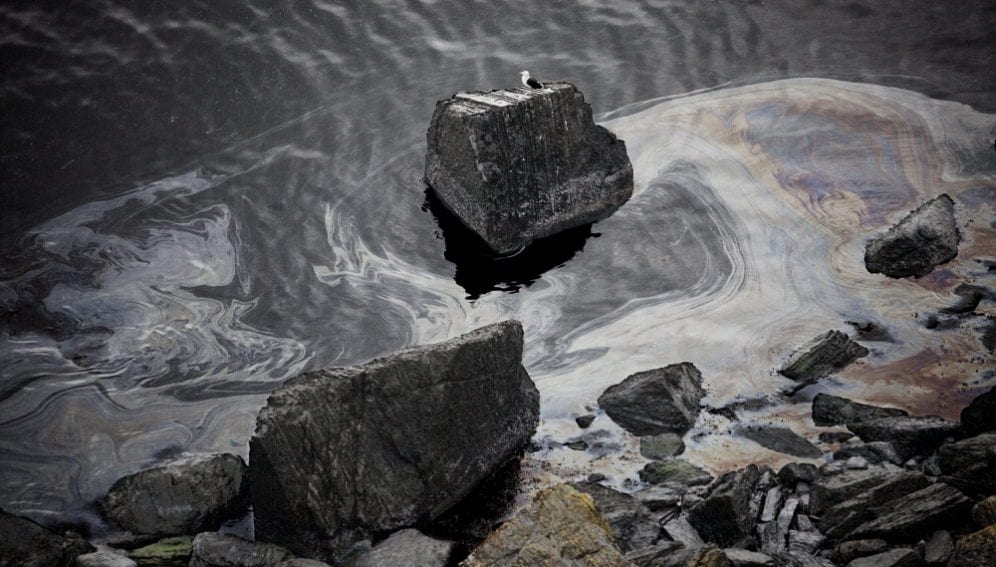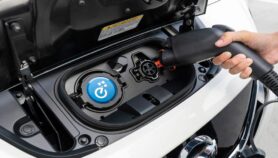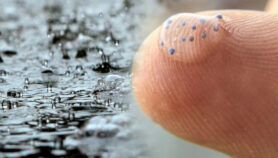By: Rasha Dewedar
Send to a friend
The details you provide on this page will not be used to send unsolicited email, and will not be sold to a 3rd party. See privacy policy.
The membrane can recover quickly and easily for reuse — it can be applied at least 10 times with the same efficiency, according to a study published in Marine Pollution Bulletin.
Leakage of petroleum pollutants into water can be catastrophic to the environment and aquatic life systems. The methods used to remove these pollutants are complex and very expensive; some require use over a long period and involve many workers, while others have a harmful effect on marine and aquatic organisms.
These methods include using chemical dispersants to penetrate the oil and break it up into small pools, setting the oil ablaze at the spill site, or gathering oil from the water surface by mechanical means.
The method that has proved most efficient, in terms of cost and ease of extracting oil, is the use of cheap and eco-friendly adsorbing materials which turn the oil layer to solid or semi-solid particles that can be easily removed.
However, these materials have shortcomings such as instability or a declining capacity to function during the adsorption process. In addition, they can’t be used for all spills.
More recently, the application of nanoscale polymeric adsorbents proved effective in removing oil spills on a large scale. And there is a trend towards using polymer blends for this purpose.
“The new element in this study is the use of natural substances, which are not harmful to the environment or aquatic organisms, interacting to create the nanostructure.”
Kamel Shueir, Mansoura University
Following this trend, the study published last September tested blends of nanoscale polyvinyl alcohol polymers, considered to be among the most dissolvable and non-toxic biopolymers. They can also be manufactured relatively cheaply from biodegradable and biocompatible polymers.
Kamel Shueir, a researcher involved in the study, explains that these characteristics made the compound a good candidate for testing on environmental applications. It was tested on its own and in a mix with other natural substances — such as starch and chitosan (derived from chitin, a fibrous substance that makes up the structure of insects and arthropods) — to produce three nano-membranes capable of removing oil spills from water.
“The new element in this study is the use of natural substances, which are not harmful to the environment or aquatic organisms, interacting to create the nanostructure,” Shueir, a professor at the chemistry department of Mansoura University in Egypt, tells SciDev.Net.
Shueir points out that the primary factor in the reaction that enables removal of the oil is the use of a dimethyl sulfoxide solvent mixed with water.
The study tested the mechanical properties of the three membranes, including their ability to hold back water and adsorb three kinds of petroleum substances of different densities: toluene, kerosene and hydraulic fluids.
The comparison between the three membranes was made by immersing the membranes in oils and monitoring their capacity to adsorb, reflected in the membranes’ increasing weight over a period of time. The oils were then recovered by simply applying mechanical pressure: twisting the membrane and squeezing it.
The polymer mixture with starch showed the highest adsorption capacity: 2.77 times more than that of the polymer alone; the adsorption capacity of the polymer mixture with chitosan was 1.25 times higher than that of the polymer alone. The adsorption rate was fast — under 10 minutes — and the recovery rate was 96.3 per cent.
Ayman Atta, a professor in chemistry department of King Saud University in Saudi Arabia, says “it is necessary to [repeat the calculation of] adsorption capacity and recovery rate several times to ensure the accuracy of the results”. He added that other low-cost materials other than starch and chitosan can be efficiently used for this purpose as well.Atta flags up the need to test the mixtures on a large scale, with large oil spills, and to evaluate the feasibility of their manufacture. Doing this may reveal constraints and challenges that require more research before the membranes can be developed for commercial use, he said.
Shueir says the research team has not yet tested the membrane on water and on a large scale, but this is a step it aims to take in the near future, “perhaps in the Kingdom of Saudi Arabia, where the problem of spills exists on a large scale.”
He stresses that the research team is studying the applicability and cost-efficiency of the method.
The membrane also has other uses, most notably as an anti-corrosion material.
This story was produced by the Middle East and North Africa edition.














